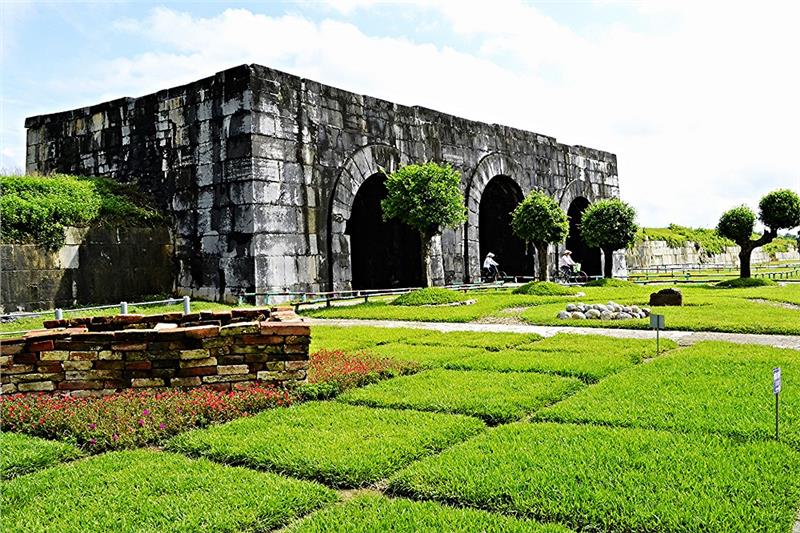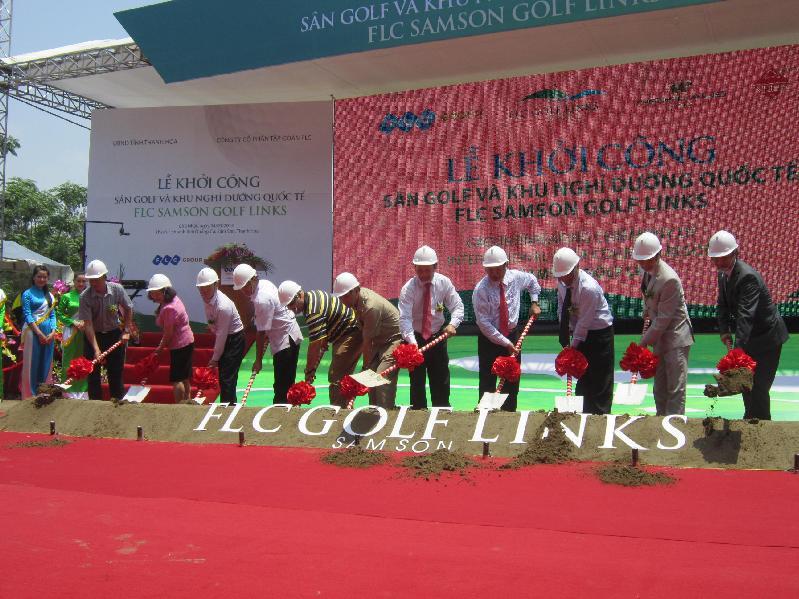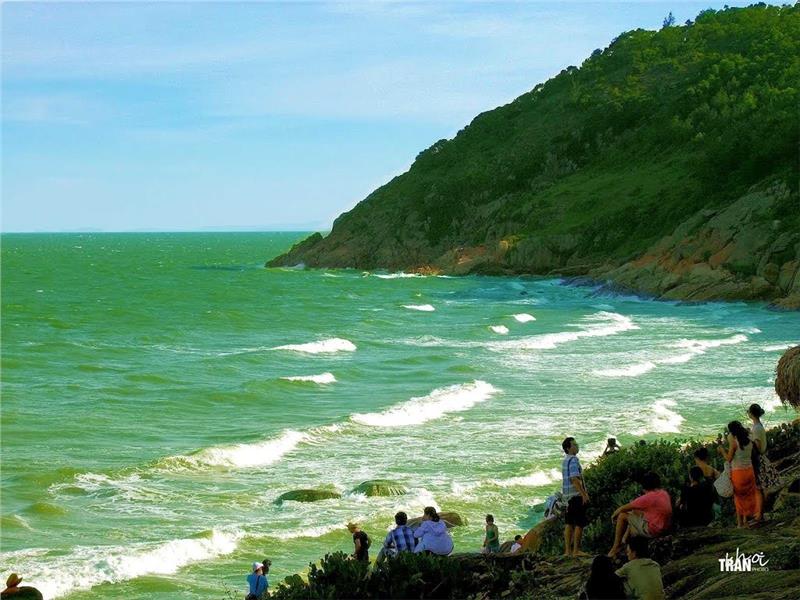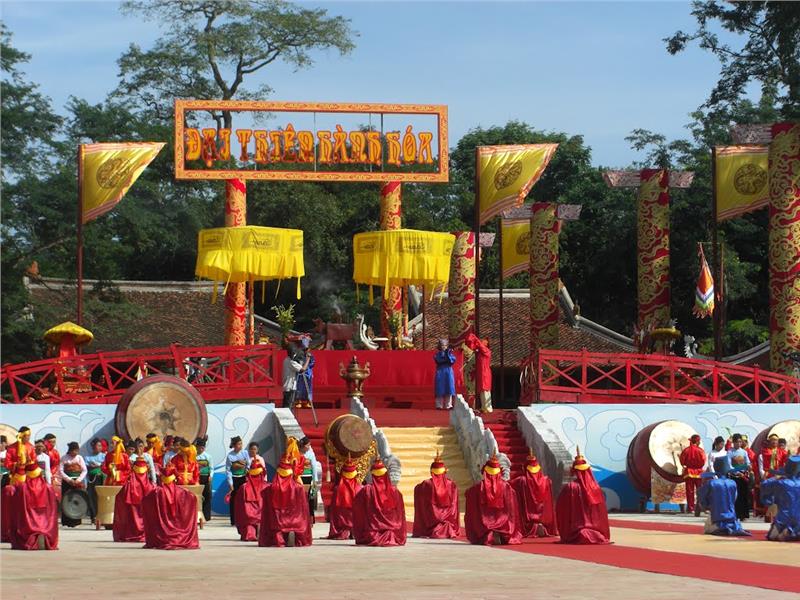Mankind was identified that existed in Thanh Hoa about 6000 years ago. The archaeological excavations showed that the first culture appearing here was Da But culture, a particular culture located along Day River and Ma River. In the early Metal Age, belonging to the Bronze Age, through the development steps before the Dong Son culture, Thanh Hoa experienced an evolution with the cultural stage: Con Chan Tien, Dong Khoi - Quy Chu equivalent to Phung Nguyen culture - Dong Dau culture - Go Mun culture in the basin of Red River. After that, it was Van Lang civilization existed 2000 years ago, Dong Son culture in Thanh Hoa flourished during the period of Hung King. Thanh Hoa is a transition between Northern Vietnam and North Central Coast at many aspects as geology, climate, administrative units and local culture. Thus, these factors show that Xu Thanh is a province with many particular local habits and customs and cultures. Thanh Hoa consists of 1 city under the province, 2 towns and 24 districts with the area of 11.133,4 square kilometers and the population of 3405 million people.

Thanh Hoa is located between 19°18' - 20°40' north latitude and 104°22’ - 106°05' east longitude. The province has the border lines with Son La, Hoa Binh and Ninh Binh in the north, Nghe An in the south and southwest, Hua Phan province of Laos in the west , the Gulf of Tonkin in the east with 102km coastal line. The natural area is 11.106 square kilometers, divided into 3 areas: coastal plain, midland and mountainous region. Thanh Hoa topography is very diverse, falling from West to East, divided into 3 distinct areas: Midland and mountainous region has the natural area of 839.037ha, accounting for 75.44% of the provincial area; the average altitude of mountainous region ranges from 600 to 700m; the midland has the average height of 150-200m.
The plain has the natural area of 162.341ha, accounting for 14.61% of the provincial area, consolidated by the system of Ma River, Bang River, Yen River and Hoat River. The average height is from 5 - 15m, interspersed with low hills and limestone mountains. Ma River Delta has the 3rd large area after Mekong River Delta and Red River Delta. The coastal region has the area of 110.655ha, accounting for 9.95% of the provincial area with 102-kilometer-long coastline, and relatively flat terrain. The coastal region has the average altitude of 3-6m with Sam Son Beach and other tourist spots as Hai Tien (Hoang Hoa) and Hai Hoa (Tinh Gia), the large land favorable for farming aquaculture and development of industrial zone and marine economy.

Thanh Hoa has the thickness of glorious history and unique cultural tradition. In the Early Stone Age, with the discovery and excavation of archaeological vestiges in Do Mountain, Quan Yen Mountain, Nuong Mountain affirmed Thanh Hoa was the residence of the primitive people, especially Con Mong cave that witnessed the ongoing development phase from the Later Stone Age to the New Stone Age. Under the domination of Han Dynasty, Thanh Hoa belonged to Cuu Chan district. Under the reign of Dong Ngo Dynasty, after separation of Cuu Chan into Cuu Chan and Cuu Duc districts, new Cuu Chan district consisted of Thanh Hoa today and the south of Ninh Binh. Cuu Chan was divided into 7 wards: Tu Pho, Di Phong, Cu Phong, Tran Ngo, Kien So, Phu Lac, Thuong Lac and Tung Nguyen. In the autonomy era, Thanh Hoa was renamed several times but Thanh Hoa had the least number of mergers and separations in the country. During the reign of Nguyen Dynasty, the first year of Gia Long (1802) called Thanh Hoa tran. The 12th year of Minh Menh (1831), tran was changed into province. Until the first year of Thieu Tri (1841), Thanh Hoa was named Thanh Hoa province. This name is called until now.
According to the population census in 2009, Thanh Hoa has 3.400.239 people, ranking the 3rd of Vietnam after Ho Chi Minh City and Hanoi. Thanh Hoa has 7 major ethnic groups including Kinh, Muong, Thai, Tho, Dao, Mong, Kho Mu. Kinh ethnic people cover majority of Thanh Hoa population living around the province, other ethnic groups has less population than Kinh people.
Thanh Hoa has 27 administrative units, including 1 city (Thanh Hoa City), 2 towns (Bim Son and Sam Son), 24 districts (Ba Thuoc, Cam Thuy, Dong Son, Ha Trung, Hau Loc, Hoang Hoa, Lang Chanh, Muong Lat, Nga Son, Ngoc Lac, Nhu Thanh, Nhu Xuan, Nong Cong, Quan Hoa, Quan Son, Quang Xuong, Thach Thanh, Thieu Hoa, Tho Xuan, Thuong Xuan, Tinh Gia, Trieu Son, Vinh Loc, and Yen Dinh). Among them, there are 639 communal administrative units, including 22 wards, 30 towns, and 587 communes.

In 2014, Thanh Hoa economy focused on building some strategic projects aimed at improving the efficiency and competitiveness to meet the requirements of sustainable socio-economic development in the coming period. The economic growth rate was estimated at 11.6%, exceeding the plan (11.5%) and increasing compared to the previous two years (2012 reached 10.3%, 2013 reached 11.2%). The economic structure of sectors in GDP shifts positive direction. Agriculture, forestry and fishery accounted for 18.8%, decreasing 0.9%, construction - industry accounted for 40.9%, an increase of 0.9%, service accounted for 40.3%, equal to the same period. GPD per capita was estimated at 1,365USD, exceeding the target (1,320 USD). Agriculture, forestry and fisheries steadily developed and achieved relatively comprehensive results; total production value increased by 5.2% compared to the same period, exceeding the planned target (3.4%). The aquaculture production reached relative growth, the production value was estimated at 1,255 billion dong, up 7.2% compared to the same period; the aquaculture production reached 132.7 thousand tonnes, up 7.1% over the same period.
The industrial production grew significantly in the difficult conditions; the production value was estimated at 30.489 billion dong, equal 99.5% of the plan, up 12.4% year over year. The service sector maintained high growth rate; domestic commercial activities met basic needs of production and consumption of the people; total retail sales of goods and services estimated at 52.474 billion, up 17.5% yoy. Export turnover estimated at 1042 billion USD, exceeding 4.3% of the plan and increasing by 12.7% yoy. Tourism activities and festivals held vibrantly, management and organization of tourism activities had many positive changes, especially in Sam Son, so the number of tourists coming here increased significantly. Tourism industry welcomed 4.5 million visitors, up 10% yoy, of which foreign tourists increased by 12.4%, revenue from tourism reached 2510 billion dong, up 11.5%. The state budget revenue exceeded the estimate and increased over the same period, estimated at 7526 billion dong, up 16.7% yoy.
The quality of education is improved. Health care is enhanced; the quality of health care is improved. Works on preventing diseases spreading are fostered. Training labors, creating jobs was interested in directing implementation; recruitment, vocational training for 55 thousand people; creating jobs for 61 thousand employees, completing the plan. Social welfare was implemented timely. Management of cultural activities and festivals is strengthened.
At the dawn of human beings, Thanh Hoa was a cultural cradle of the ancient Vietnamese. According to the excavation results, during ancient Stone Age dating back as far as a few thousand years ago, three ancient civilizations including Son Vi, Hoa Binh, and Bac Son flourished in the archaeological sites of Do Mountain and Con Moong Cave (Thach Thanh). Later the finding of Dong Son civilization once again proved the long standing existence of this historic land. This was the first culture covered a large national area from Hoang Lien Son to the Southern Vietnam. Referring to Dong Son culture is referring to bronze drum. It is almost the ultimate art of bronze casting with the peak technique of the ancient world, admired by the whole world until now. Dong Son culture under the period of Hung Kings was formed in delta and midland with many rivers that had the wet-rice cultivation developed early and a metallurgical industry reached the peak.
Moreover, Thanh Hoa still stores many traditional cultural forms as legends, anecdotes, cultural folks, art performances, and a wide of long-lasting theatrical performances. These performance have constantly been refined to the present days including Xuan Pha folk performance (Tho Xuan), Chieng and Chut (Yen Dinh), Dong Anh folk songs, Xuong Rang, Bo Meng of Muong group, Ca Sa, Kin Chieng, Booc May of Thai people, Chuong and Rua dancing of Dao people, and so on. In addition, Thanh Hoa people created their own distinctive cultural features which are reflected in the diversified cultural heritages. These include handicraft villages of Kinh, Muong, Dao, Thai, Tho: stone carving of An Hoach village (Dong Son), forging of Tat Tac (Hau Loc), bronze casting of Tra Dong, earthenware making of Duc Tho Van village, paper making of Dao ethnic group (Ngoc Lac), weaving of Tho (Nhu Thanh), linen making of Mong (Quan Son), brocade weaving of Thai and Muong people (Ba Thuoc, Ngoc Lac).

Thanh Hoa is a province rich in tourism potential. Currently, Thanh Hoa tourism is identified as the key economy industry of the province. The province has planned the infrastructure to enhance the competitiveness in tourism. Ben En National Park is located about 46km far from Thanh Hoa city to the southwest, in Hai Van commune, Nhu Thanh district, Thanh Hoa. It is a wide and diverse system of lakes, caves, mountains and forests, creating favorable conditions for eco-tourism development. There are many rare and precious varieties of fauna and flora as Elephant, bear, tiger, trachypithecus francoisi, ironwood, Chukrasia velutinaslice, Parashorea chinensis, and so on. Coming here, tourisrs will be attracted to its poetic and majestic scenery. Sam Son Town is located about 15km from the Thanh Hoa City to the east and 170km from Hanoi. This is one of the famous tourist spot of Vietnam since the early 20th century. Sam Son beach stretches nearly 6km from Lach Hoi to Truong Le Mountain. Traveling here, tourists not only are strongly impressed by a long coastline of white sandbeach, pletiful scenes and historical vestiges but also are are always welcomed by friendly and hospitable people here.
In addition to the beautiful beach, Sam Son also has many famous scenic spots. There are Truong Le Mountain running along the beach, romance Trong Mai Island, majestic Doc Cuoc Temple which means “one leg”, Co Tien Temple, sea-viewing pavilion - where tourists can admire an immense sky and sea. Legend has it that Truong Le Mountain was a girl incarnate to protect villages from storms; Trong Mai Island was formed from a faithful love of a young couple, Doc Cuoc temple was used for worshiping one-leg god who managed to slay a sea monster and to guard the sea in the past. Ho Dynasty citadel (or Tay Do capital – Western Capital) is situated in Vinh Tien and Vinh Long communes, Vinh Loc district. This is a historical cultural relic ranked the national level and recognized as the World Cultural Heritage Site in 2011. The Citadel is not only the pride of Thanh Hoa people, but also the pride of Vietnamese people all over the country. It is the only ancient capital built of stone, associated with a short dynasty (1400 - 1407) with the remarkable innovations in examinations and expanding schools, promoting Nom scripts, issuing banknotes. Today, Ho Dynasty Citadel has been restoring to restore and preserve a 600-year-old unique architectural work and to become an attractive place for domestic and international tourists when coming to Thanh Hoa.
Cam Luong fish stream: Located in Ngoc village, Cam Luong commune, Cam Thuy district, about 70km far from Thanh Hoa city, this is a natural fish stream becoming an interesting tourist attraction in Thanh Hoa. There are thousands of big and small fishes swimming along the stream. Each fish weighs from two to eight kilograms on avarage; rarely people can found them with 30kg in weight. Although there are many fishes in the stream, the water is very clear and cool, even tourists can used to wash their faces. Local people consider the fishes as the gods (the origin of the name "Holy fish stream"). Despite having a lot of fish, no one dare catch them, because people said that eating "holy fishes" will encounter risks and unlucky. Coming to Thanh Hoa, in addition to visiting attractions, tourists can taste unique local specialties such as nem chua (fermented pork roll), che lam Phu Quang, goat meat, chicken (Vinh Loc district), gai cake Tu Tru (Tho Xuan district), dishes from mussels in Giang village (Thieu Hoa district), and seafood in coastal districts of Sam Son, Tinh Gia and Nga Son.
Festival

Like other provinces and cities in the country, Thanh Hoa also owns a series of unique festivals. Paticipating in Thanh Hoa festivals, tourists will have the opportunity to explore and experience special cultural identity of this land. Through more than 600 years, Lam Kinh has become a historical relic of the nation. Tourists coming here not only can admire an exotic land of Lam Kinh but also commemorate a national hero. From 21st to 23rd of the eighth lunar month every year, Xuan Lam commune, Tho Xuan district hold a festival to commemorate the national hero - Le Loi who led the army and the people against Ming invaders in the 15th century. Festival commemorating Ba Trieu: The festival is held from the 19th to 24th of the 2th lunar month in a large space from temple to tomb and communal house. During the festival, villagers also organize wrestling, rope climbing, cooked the rice, chess competition...making the festival more exciting, bustling. Fish palanquin parade is annually taken place in January 8th in Luong Ngoc village, Cam Luong commune, Cam Thuy district. The festival appeared for long time, the Muong ethnic people in Cam Luong have preserved, kept intact to this day. The festival is held to pray for good weather and a bumper crop. Song Temple festival: Located in Bim Son, Thanh Hoa, Song Temple is one of the places worshiping Holy Mother Lieu Hanh - one of Four Immortals ò Vietnam. Song Temple festival is taken place from 10 to 26 of February of the lunar calendar, of which 25th day is the main day when Holy Mother descending earth.
